Project Management Assignment: Tasks Based On Managing & Planning Projects
Question
Task:
The project management assignment consists of the following tasks:
Task 1
1.1 Critically evaluate project management methods, models and underpinning theories.
1.2 Assess the value of project planning methods, individual plans and project management processes for a range of different organizations and business objectives.
1.3 Identify how risk is managed in projects and illustrate how risk can be mitigated in global, complex or sensitive projects.
• Plan Risk Management
• Risk identification
• Conduct a qualitative risk assessment
• Conduct Quantitative Risk assessment
• Plan Risk Responses
• Implement Risk Responses
• Control Risk
Task 2
2.1 Critically review how project feasibility can be assessed for individual projects.
2.2 Critically evaluate the role and choice of individuals and teams in project development and project delivery.
Answer
Project Management AssignmentTask 1
1.1Each project manager knows that deciding on the best strategy is crucial to landing the job. Despite the fact that there are several project management methodologies and models, current section will focus on the three most prevalent.
Agile
Traditional planning, analyzing requirements, designing, programming, debugging, and deployment are all included in the agile stages of development;however, they are organized in a cycle instead of a line. This indicates that the processes are adaptable, reproducible, and can occur in any order or in parallel(Arturs , 2016). This allows for the collection of user feedback, continual testing in various situations, and modifying the project's scope on the fly. Agile's underpinnings include:
• Empiricism — The capacity to execute, pause, reflect, adapt, and repeat in a step-by-step procedure in order to boost productivity(Arturs , 2016).
• Prioritization - Execute work that adds value to the organization.
• Self-Organization — Depending on the resources & limits, the team understands best how to execute the work.
• Time-Boxing — The team must perform the allocated tasks within the timeframes specified.
• Collaboration - The responding to meeting the deadlines for completing the final products.
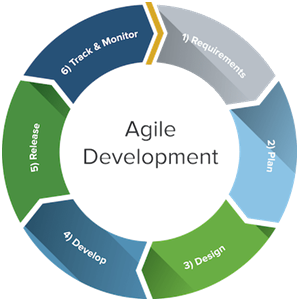
Figure 1 - (Arturs , 2016)
Kanban
Kanban means "visual signal" as well as "card" in Japanese. A Kanban was used by Toyota line employees to signal phases in the production process(Olena , 2019). The very visible nature of Lean enabled teams to interact more easily about what work needs to get done and then when. Kanban is based on four basic principles:
• Increase communication and teamwork by visualising work.
• To avoid a never-ending list of unprioritized open tasks, keep your 'work in progress’ to a minimum.
• Measure and optimize the flow, gather metrics, and foresee potential issues.
• As a result of analysis, strive for ongoing improvement.
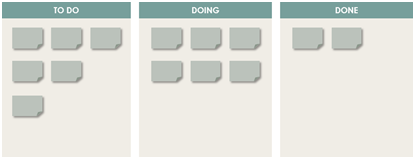
Figure 2 - (Olena , 2019)
Waterfall
Waterfall is a method of software development that follows a set of steps. Each represents a different stage of application development, and that each one must be completed first before next could begin. Between each development phase, there is usually a milestone.
• Structured as a single large project using a step-by-step procedure
• It's best for settings where change isn't a regular occurrence.
• A procedure that necessitates the establishment of well stated requirements from the start.
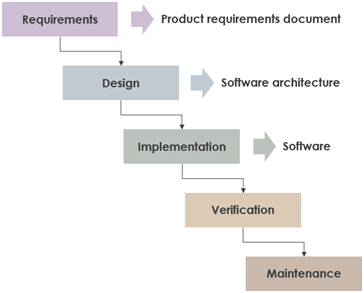
Figure 3 – Waterfall Framwork(Agyei, 2015)
1.2
Case 1 – Deluxe Beds Ltd adoption of Agile Project Management methodology
Deluxe Beds Ltd is a UK-based SME that has been manufacturing bedding since 1995. The goal of this case study would be to see how Scrum, an agile project management methodology, may help a small business-like Deluxe Beds accomplish management innovation in such a conventional manufacturing sector.
The following were the challenges and goals:
• Creation of a messaging strategy to keep all employees informed about important decisions and performance towards strategic objectives.
• Facilitation of the transition to a larger organisation.
• To evolve as an expert workforce, you must be able to make informed decisions, oversee processes, and cooperate.
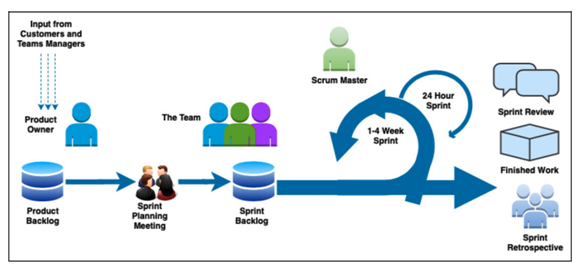
Figure 4 - Scrum for Deluxe Beds Inc (Sammar, 2020)
Senior Management devised a project project schedule that would incorporate Scrum as a comprehensive improvement framework wherein the entire team could very well work together to achieve a common goal, demanding the assumptions of even more "traditional and sequential" strategies to process growth, testing, and production improvement. That would also allow teams to self-organize by fostering tight collaboration across all team members including daily face-to-face interaction between all members of the team including 'disciplines' engaged. Numerous sub-projects had been organised throughout the project based mostly on Scrum framework as well as the idea of its own rhythmic cycles of action. Scrum became part of an organization-wide improvement initiative that resulted in cost savings of about £1,800,000(Sammar, 2020).
Case 2
Erricson’s adoption of Agile Methodology
Despite the fact that agile software development methodologies were originally created for single, small teams, large corporations have been progressively adopting them in recent times.
Objectives and needs
• Ericsson had recognised need to be even more agile at the company level and had considered the implementation of agile methodologies .
• The company's conventional waterfall-based approach was no longer effective.
• There were a number of challenges, including the difficulty in planning and coordinating the work(Maria , 2018).
• Teams were having trouble completing promised innovations on time and wanted to improve their workflow methods.
• The requirement for a speedy end-to-end workflow as well as Continuous Deployment
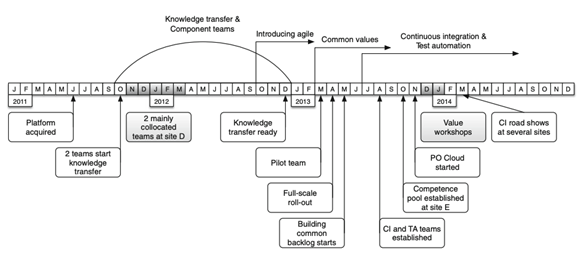
Figure 5 - (Maria , 2018)
A pilot phase comprising volunteers working through an agile team kicked off the transition. This worked really well, which was not surprising given that various writers have written about the importance and value of prototyping in agile transitions. Because of the organization's scattered character, different sites had differing perspectives on both the company's future and the style of working. As a result, it was necessary to synchronise the various sections of the business in order to make agile work possible and to establish a strong product and organisational identity. To that purpose, the organisation held "value workshops" in which similar organisational values were explored and members from disparate locations could meet face to face(Maria , 2018). CI or Continuous integration is a key component of agile development, especially when it comes to scalability. The company has three specialised teams focusing on CI, a well-known excellent practise that has been seen in numerous large-scale agile transitions. Together this approach helped Ericson and their journey into Agile Transformation.
1.3
Process of Risk Management
Any project entails risk, which necessitates the implementation of a risk management strategy. Risk management include both the identification of predicted risk and also the analysis of the risk's potential impact, including the risk's treatment & follow-up.
Risk Identification
Risk identification entails the establishment of risk registers based on previous activities' experience, as well as additional procedures such as expert interviews and discussions(Amir-Hossein , 2016).
Risk Evaluation
Risk assessment is a method of determining the possibility of a crisis occurring and the associated consequences. Because not all risks are created equal, some threats are far more likely to take place than others, therefore it’s overall impact differs(Hamzah Abdul , 2020).
• Qualitative Risk Assessment
Using only a prior defined rating system, a qualitative risk assessment prioritises the risks already discovered. These risks would be ranked as per the potential likelihood of the said risks occurring and the overall impact on goals of the project if they even materialize. On a scale from 0 to 1, statistical likelihood is typically ranked (for e.g., .3 would be a 30% probability). The impact level is estimated by the organisation (for instance, a 1 to 5 with 5 currently being the greatest impact–including quality, budget and schedule)(Amir-Hossein , 2016).
• Quantitative Risk assessment
A quantitative risk assessment is yet another assessment of the primary concern risks where a quantitative evaluation is offered in order to construct a probability analysis and assessment. It's also enumerated as:
• Quantifies the project's possible possibilities and assesses the chance of achieving certain objectives of the project (Calleam Consulting Ltd, 2008).
• Whenever there is ambiguity, it offers a quantitative plan for making calculative judgments.
• Sets reasonable and feasible budget, scope, and schedule goals.
Plan Risk Responses
Effective risk planning refers to the process of coming up with options and initiatives to promote opportunities and reduce risks to project goals.
Implement Risk Responses
Risk can be dealt with in four different ways:
• Risk Mitigation - This procedure is concerned with the hazards that must be avoided.
• Risk Avoidance - The best way to deal with these dangers is to avoid them.
• Risk outsourcing or risk transfer — These are hazards that can be 'outsourced' or 'transferred' to a third-party entity(Agyei, 2015).
• Acceptance of risk - These are hazards that cannot be handled or optimised in any way(Pelle , 2019).
Risk Control
A collection of several analytical techniques used by companies to assess potential losses and take efforts to limit or eliminate them is known as risk control. Managing risk also comprises taking proactive steps to reduce risk in specific situations. As a consequence, risk management assists firms in limiting investment and revenue losses (Kyriklidis & Dounias, 2016).
Case Studywhere Risk Management processes were successfully applied
11 Floor building in University of Malaya, KL, Malaysia
The development of an 11-story building at the University of Malaya in Kuala Lumpur would be the subject of this case study.
How the risk was averted in the construction of the 11-Floor building (Addition of a Block)
• The project management team was involved in risk management in this initiative.
• Regular Meetings & Preparation of Risk Register
They held regular meetings and identified all the risks and used a Risk Register to note and track all the risks. The risks identified were thereafter categorized for Risk Avoidance, Transfer, Mitigation or Acceptance.
• Use of Critical Path Method
For mitigation and avoidance, the team used the critical path method (CPM) as well as the S-curve to spot possible risks and challenges in the project. CPM assists the project team in precisely depicting the numerous activities that must be completed in order for the task to be finished on time.
• Construction Delay
Lag is regarded as among the most significant dangers in building projects and must be avoided at all costs. If float produces a delay, then project team will examine the CPM to determine the float's possible impact on the entire project if no changes are made.
• Use of S-Curve
In addition, the project team employs the S-curve like a risk indicator, allowing us to decide for the given project could possibly be accomplished within the schedule as well as financial constraints. This sameS-curve would also be used to estimate the given threatsconnected to the action.
Every one of these factors contributed to the project's effective risk management.
Task 2
2.1A Feasibility Study must be completed as early in the Project Life Cycle as possible given the situation. The finest time to conclude it is after you've identified a number of different optional options and need to figure out which one is the most feasible to carry out.
Project Feasibility Study Steps
1. Preliminary Analysis
One should concentrate on an unmet need, a marketplace where demand exceeds supply, or if the service or product offers a significant advantage. Then you must decide whether the feasibility constraints are too high to overcome(Agyei, 2015).
2. Projected Income Statement
Going rearward is required at this point. Start by predicting how much revenue the initiative will generate in, and afterwards figure out how much budget of the project is needed to achieve that goal. This framework serves as the foundation for financial statements (Calleam Consulting Ltd, 2008).
3. Conduct market research
Market research will give you the most realistic picture of the project's revenue and return on investment. The geographical market impact, demographics, competitor analysis, market valuation & percentage, whether or the market expandable are all factors to examine.(Gholamreza & Mina, 2016).
4. Plan Business Organization and Operations
After the foundation of the prior iterations has been built, it's time to build up the whole thing and procedures of the proposed project in order to fulfil its technological, organizational, financial, and regulatory viability. Equipment combined together with merchandising options, real estate, personnel, supplier availability, expenditures, and so forth must all be taken into account.
5. Balance sheet creation
This entails calculating the financial assets and that must be accurate. This should include things such as expenditures, sources, available finance options among other things.
6. Review
Previous procedures, such as the financial statements, must be reviewed and compared to your expenses and obligations. After reviewing, analysing, and monitoring, any emergency plans should be developed(Hamzah Abdul , 2020).
7. Final decision
The final choice entails determining whether or not the endeavour is worthwhile. Specifically, consider whether the commitment is worthwhile in terms of time, effort, as well as money, as well as whether it is in line with the organisation's strategy & long-term objectives(Ke & Zha, 2017).
2.2Role of Project Manager:
The project manager's job is to serve the project's entire team in order to keep the development and design of products necessary for the project on time and within budget. The project manager is also in charge of drafting contracts between the project members as well as the project's sponsors in order to estimate the project's goal, length, and budget. Furthermore, the project manager is responsible for assigning funds among stakeholders as well as other team members, along with carrying out communication procedures linked to activities and challenges(Kyriklidis & Dounias, 2016).
Project Sponsor:
Project funding is handled by the project sponsor, who is also responsible for functioning as a spokesman for project senior executives. Additionally, the project sponsor is responsible for defining project success criteria as well as meeting the project customers' requirements. The sponsor is also responsible for offering guidance and direction to projects in order to empower them, as well as critical corporate strategies and objectives. Only after project is completed, the project sponsor evaluates the project's success.
Project Team Leader:
The project team leader assists in the planning, implementation, and promotion of all project-related activities. In addition, the lead is responsible for motivating all team members to actively participate in the project's goal(Gholamreza & Mina, 2016).
Project Team:
The project team assists in the execution of project activities by providing experience. They are also in charge of communicating with project stakeholders to ensure that the project meets their clients' needs. The project team additionally investigates and documents current and future procedures and systems. The project team needs to ensure that members collaborate with other group members in order to achieve the project's aims and goals.
2.3ProjectLibre
ProjectLibre is a freeware opensource project management tool. Administering the project process, managing resources, regulating expenses, evaluating planned and realised viewpoints, and analysing the project at various stages of execution are all possible with this software.
It's made up of the following types of distributions:
• ProjectLibre Project Management Software;
• ProjectLibre Server.
ProjectLibre is a desktop project management tool that indicates when individual project oversight is required, whilst ProjectLibre Server is a cloud-based solution designed specifically for managing corporate projects. ProjectLibre has several features, including cost management, resource management, task management, analytical framework charts, PERT charts, Gantt charts, CPM, report generation, printing, PDF export among others.
The following are the key benefits of this software:
• It enables the project timeline to be planned and milestones to be set.
• It provides for effective project management across multiple projects.
• The ui is straightforward and easy to use.
• enables quick project planning
Disadvantages include:
• Even though the interface is straightforward, the design is old
• It's doesn't allow one to see most of the upcoming milestones including all projects at the same time for better managing projects.
Odoo is a project management application created by Odoo SA. Materials management, sales and purchasing management, human resource management, task automation, marketing, and accounting are all possible with this programme. It is built on a 3-layer MVC (Model-View-Controller) design that includes the database, server, as well as client.
The following are the key benefits of this programme:
• Comprehensive software that solves a wide range of business demands (project management, e-commerce solutions, CRM, invoicing, accounting, and so on);
• Interface that is intuitive and simple to use;
• Page navigation is simple, and viewing time is kept to a minimum.
• Being created from modules allows users to pick and select the ones they truly need, with the option to add more later.
• No setup requirement is needed and no hardware infrastructure is required
• SaaS based systems are automatically updated and maintained
The following are the software's major flaws:
• Complex project management needs may not be possible
• Suitable for smaller projects
• Compatibility issues with other project management tools
References
Agyei, W. (2015). Project Planning And Scheduling Using PERT And CPM Techniques With Linear Programming: Case Study. ijstr.org.
Amir-Hossein , K. (2016). Offering a framework for evaluating the performance of project risk. Procedia - Social and Behavioral Sciences 2, 82-90.
Arturs , R. (2016). Method for Adaptation and Implementation of Agile Project. Procedia Computer Science, 43-50.
Calleam Consulting Ltd. (2008). Why Do Projects Fail? A Denver Baggage Case Study.
Gholamreza , J., & Mina, O. (2016). A Study on Project Management Based on PMBOK and PRINCE2. Modern Applied Science, 142-146.
Hamzah Abdul , B. (2020). Combination of Program Evaluation and Review Technique. INTERNATIONAL JOURNAL OF INTEGRATED ENGINEERING, 65-75.
Ke, H., & Zha, C. (2017). Uncertain resource leveling problem. Journal of Intelligent & Fuzzy Systems, 2351-2357.
Kyriklidis, C., & Dounias, G. (2016). Evolutionary computation for resource leveling optimization in project management.
Project management assignmentIntegrated Computer-Aided Engineering, 173-184.
Maria , P. (2018). Large-scale agile transformation at Ericsson: a case study. Empirical Software Engineering, 2550-2596.
Olena , P. (2019). Adaptation of flexible project management models based on Scrum and Kanban technologies. Technology audit and production reserves, 4-10.
Pelle , W. (2019). Value creation through project risk management. International Journal of Project Management, 10-12.
Sammar, J. (2020). Helping Deluxe Beds to sleep easy: A case study of agile project management. The International Journal of Entrepreneurship and Innovation, 132-139.












